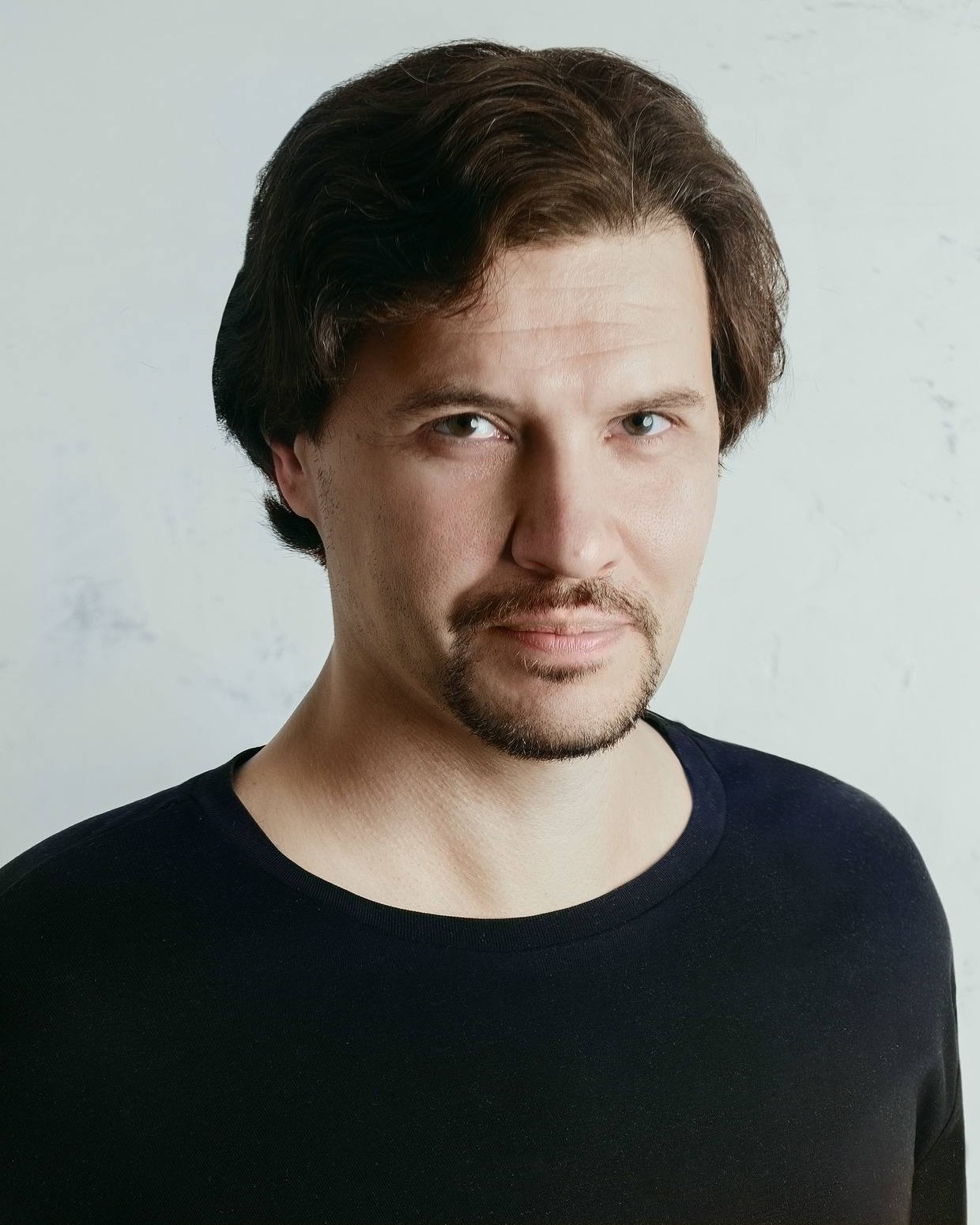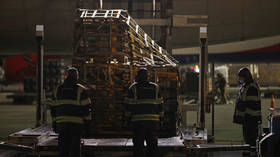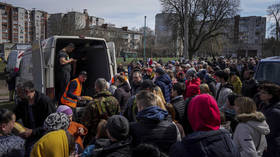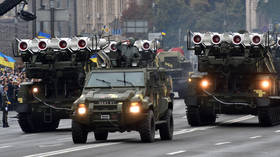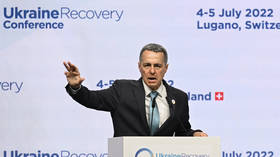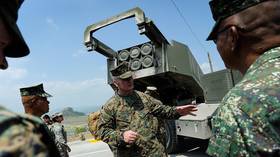Sergey Poletaev: By fall, the result of the first phase of the Ukraine conflict will be clear – what comes next is up to the West

Last weekend, the territory of the Lugansk People’s Republic was completely liberated from Ukrainian control. This is not only a symbolic stage in the entire battle for Donbass, but also the completion of a significant military operation: the agglomeration of Rubezhnoye-Severodonetsk-Lisichansk is the second largest after Mariupol among those for which serious fighting has taken place.
The results are contradictory. On the one hand, the successes are much more modest than we had hoped for in the spring: the enemy (the Ukrainian Armed Forces) has not been defeated, and the Donetsk group is not completely surrounded. Moreover, there was no attempt at such encirclement.
Instead, the Russian army, combined with the forces of the Donbass republics as well as contract soldiers, has adopted the tactic of slowly pushing through defensive lines with a reliance on artillery. This could be called a modern reiteration of the First World War principle: “artillery devastates, infantry floods.”
The reason is a shortage of personnel, which is a result of Russia’s refusal to implement mass mobilization. The armies of the Lugansk (LPR) and Donetsk (DPR) People’s Republics, the Wagner militia and the Russian Guard play the role of infantry manpower, but still the density of the advancing ranks is three to five times lower than the normal rule in such situations, which cannot but affect the tempo. The main consequence is the inability of the advancing side to break through the frontline with rapid strikes and encircle the enemy.
This enables the Ukrainians to hold a defensive position in a particular settlement to the last man, and then retreat with the most capable units, leaving the poorly trained “meat” of the territorial defense to cover it. The tactic has its flaws: when retreating, heavy equipment has to be partially abandoned, plus there are further losses from artillery and aviation strikes during the retreat itself.
On the other hand, Russia is honing and perfecting its assault actions, as can be seen by the pace of the offensive: the smaller of the three towns, Rubezhnoye, was fought over for two months; Severodonetsk was taken in a month, while Lisichansk was seized in a week and a half. Along the way, to the south of Lisichansk, a ring around Gorskoe-Zolotoye was also loosely closed.
The Russian command seems to be aware of the problem, so in the first days of July, when the fate of Lisichansk had already been decided, it focused not on creating a tight encirclement ring, but on pushing as far west as possible on the heels of the retreating enemy. As a result, the front came close to the next Ukrainian defensive line: at Seversk-Soledar-Artemovsk (Bakhmut). These are three densely built-up towns, between which there are smaller settlements along a railway and river. The northern end of this line rests on the Seversky Donets River, which is difficult for Russia to cross, while to the south it borders the Ukrainian military’s fortified area, which was established along the line of contact in previous years.
This is probably the end of the operation in this area and a pause for rest and reinforcements will follow.
So, where will the next major offensive happen?
There are several options.
First, it is possible to have success in the northern part of the DPR by breaking through and dissecting the aforementioned Seversk-Artemovsk line.
Second, it is feasible to move from Izyum and Bogorodichnoe to the rear of Slaviansk-Kramatorsk, the last major stronghold of Ukrainians in this area. The Russian Armed Forces created a good bridgehead here in April and May on the southern bank of the Seversky Donets. Kiev’s forces understand the vulnerability of their position and are constantly harassing the Russian forces with sabotage actions, facilitated by the dense Izyum forests.
Thirdly, the constant shelling of Donetsk itself is forcing Moscow, and its partners, to act here in the first place. The goal is to move the front line at least 20-30 kilometers away from the city, beyond the range of the main mass of artillery. So far, Russia has had little success in this direction: back in the spring, the front line was squeezed, and a bridgehead was created to the north of Donetsk, near Verkhnetoretskoye, while to the south of the city, a similar foothold in Marinka had to be abandoned.
Fourth, the Kherson-Nikolaev area looks tempting, where the Ukrainians have comparatively few forces and the main prize (the city of Nikolaev) is just a stone’s throw away.
What about the enemy? Right now, the Ukrainian army is completely incapable of offensive action – despite constant talk of an imminent counterattack – but as weapons are accumulated and mobilized reservists are trained, it may try to seize the initiative. The north of Kherson Region and the city of Kherson itself appear to be the most preferable areas for Kiev to mount such an operation.
So far, all previous attempts to attack have failed for the Ukrainians, but the weakness and stretching of Russian troops in Kherson Region (about 20 kilometers per battalion-tactical group) offer a chance to create a local advantage in this direction and a headache for Moscow’s forces.
Another operational area is the northern Kharkov Region, where Kiev is trying to push the front line away from the city and Russia is trying to prevent Ukrainian troops from reaching the border. It is in this sector where the most frequent shelling of Russian territory takes place; the first casualties were recently reported in Belgorod.
When attempting an offensive, Ukraine will face the same problems as Russia, only on a much larger scale. Kiev has a slight advantage in infantry, but the backbone of land warfare, artillery, is severely lacking, with Western supplies estimated not to cover even a fraction of the losses. This precludes rapid breakthroughs, while the slow pace allows Russia to promptly pull up its artillery and stop the crisis. The total superiority of Russia in aviation further exacerbates the issue.
However, even the current supplies of Western high-precision artillery, combined with Western intelligence, are enough to bombard Russian rear areas. For example, the number of arms depots successfully hit by the Ukrainian army is growing – a weak, but tangible, response to Russia’s daily “re-setting” of Kiev’s supplies.
In the absence of tangible victories, Kiev once again must limit itself to virtual overtures. It must be said that Moscow is playing along. For example, on June 30, Russia evacuated Snake Island, which had been taken on the first day of the special operation. The small territory was a vestige of an attempt in February to attack everywhere at once, and it is surprising that Moscow managed to hold it for so long. In fact, the Russian garrison on the island was under constant shelling, and couldn’t control the waters around it: there was no way to deploy the coastal batteries while under fire.
The direction of the campaign can be traced until autumn: Russia will continue to retake Donbass, while Ukraine will try to respond with at least one real, rather than virtual, offensive. The results of both will draw a line under the first military campaign.
Will this be the end of the fighting, and will a truce follow? Much of this depends on the position of the EU and the US, which do not seem to want to back down and are preparing to face winter in a state of economic war with Russia.
But that is a topic for another conversation.
The statements, views and opinions expressed in this column are solely those of the author and do not necessarily represent those of RT.
